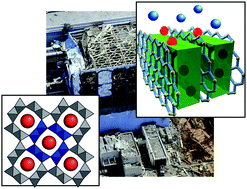Materials nanoarchitectonics for environmental remediation and sensing
Abstract
The global environment has been variously compromised leading to problems such as global warming and radioactive contamination. In this feature article, we will focus especially on materials for environmental remediation based on the concept of materials nanoarchitectonics. The topics are classified into three categories: removal and


 Please wait while we load your content...
Please wait while we load your content...